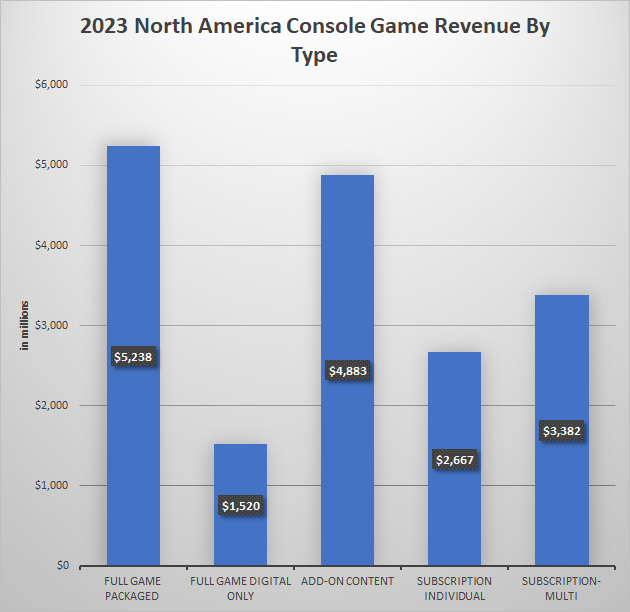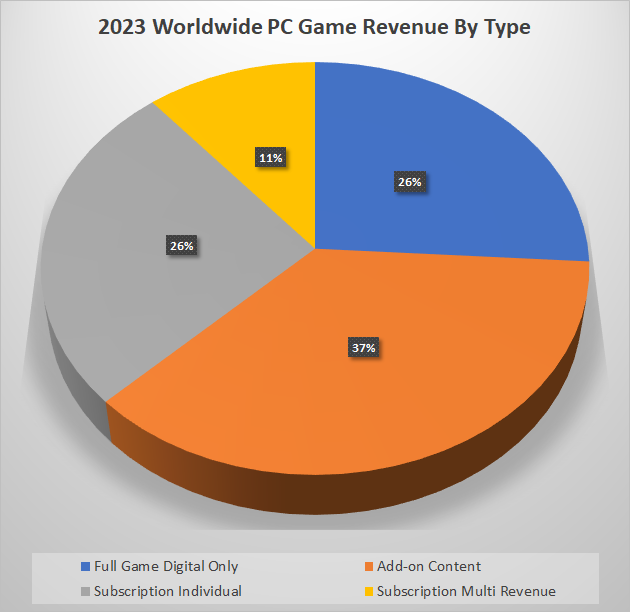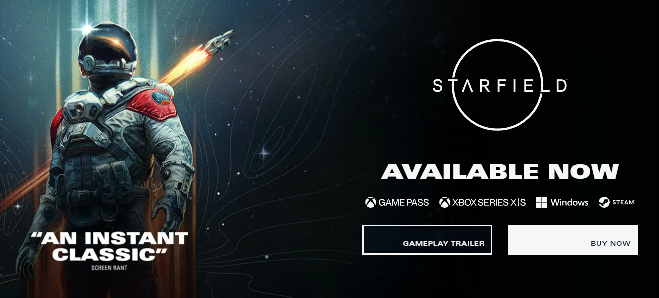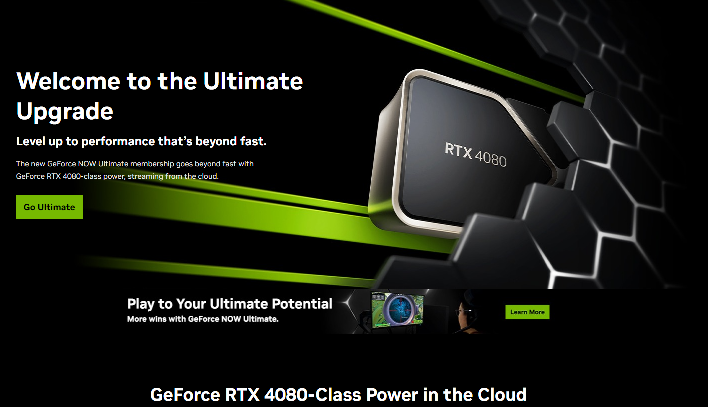The completion of the Microsoft acquisition of Activision Blizzard launches a new era for the video game industry. After years of struggle Microsoft has bought itself a position as a leading industry force. The overall impact will be huge but remains uncertain. However, we can start sketching out the major players and how this battle for market control is likely to play out.
Microsoft is Now Largest Video Game Publisher
In recent months, DFC Intelligence has been silent on the subject, but our opinion was that the merger should and would be approved. Now we are free to start talking. Our major concern for a long time is that Microsoft will use games as a Trojan Horse to get consumers to unwittingly change settings in its mission critical business services (Windows, Office, OneDrive etc.). However, this is an issue with most large tech companies and had little to do with the Activision Blizzard acquisition.
Post merger Microsoft will have a challenge integrating Activision Blizzard. Getting the merger approved was just the first step. The big question is can Microsoft truly become an entertainment software publisher? The track record is questionable.
In the video game market, Microsoft has mainly been a distributor. Microsoft offered a game platform and services that promoted products from third party content creators. Of course, Microsoft also published their own games. However, as a game software publisher Microsoft was not in the top 10. The acquisition of Activision Blizzard makes Microsoft the number ONE game software publisher in the world ahead of not only Nintendo but China giant Tencent.
What Happens to Video Game Consoles?
The merger clearly highlights a serious new segmentation in the video game market. The industry is divided into exclusive platform providers versus cross-platform service providers. Microsoft is now primarily in the later camp. Only Sony and Nintendo remain as major exclusive platform providers.

From the November 2023 DFC Video Game Console Market Forecast
Of course, Microsoft has the exclusive Xbox platform which it has struggled to get consumers to adopt. Going forward it appears Xbox proprietary hardware will be less important to the Microsoft video game ecosystem. Or to put it another way, Microsoft will be a major player even if Xbox hardware does not have strong sales.

From the November 2023 DFC PC Game Market Forecast
One of the best examples is the recent Microsoft game Starfield. Starfield had been in development for years and was a major asset Microsoft acquired in its $8 billion purchase of Zenimax Media in 2020. Starfield was originally going to be a multi-platform title but after the purchase was only released for Xbox and PC. Starfield is an example of a classic big box retail game. However, hardware requirements currently limit how many consumers can enjoy the game.
The big problem with Starfield was that it required users to have an Xbox system or a high-end PC. Of course, the game could also be streamed via Microsoft’s Cloud Gaming Service game service that is included with Game Pass. The problem DFC found during testing was that Starfield was unplayable using Game Pass cloud. However, there is another option.

Streaming Games is Becoming a Reality
Last February Microsoft announced a deal with Nvidia to bring Microsoft games to Nvidia GeForce NOW’s streaming service. This deal was done primarily to help assure regulators that Microsoft would not have a monopoly on cloud gaming. However, GeForce NOW is a powerful service and we have found Starfield is a great showcase for the Ultimate tier of the service. In other words, Starfield does not perform on Microsoft’s own cloud service but it does work with Nvidia’s premium service.

As the game industry shifts to a cross-platform service model, Microsoft will face all kinds of competition. Nvidia, Amazon, Google, Valve, and others all offer solutions that compete with Microsoft. Furthermore, these companies do not have to face the challenge that comes with being the leading software publisher. There is a good chance Activision Blizzard will weigh Microsoft down when it comes to competing in the larger game distribution space.
Can Sony and Nintendo Compete in the New Order?
Of course, exclusive platforms will also be around for the foreseeable future. Nintendo has carved out its own niche that should assure them a long-term position. Sony clearly faces a greater challenge, especially once the PlayStation 5 reaches its end of lifespan. Without key franchises like Call of Duty, a PlayStation 6 may be a tough sell.
Overall, 2023 has been a stagnant year for the video game industry and a slight disappointment. Much of this was due to lingering issues from Covid shutdowns but there have also been many cautious observers trying to assess what the Microsoft purchase of Activision Blizzard will mean. The big games that did launch continued to have strong sales.
Now that the deal has gone through, the industry should be ready for a boom year in 2024. The latest DFC consumer surveys have showed record forward looking purchase intent. DFC is offering a free 2024 video game industry outlook report for qualified industry professionals. Contact us for more details.
New Forecasts Available
The latest DFC Intelligence forecasts for all major video game segments have been released. Contact us for more details.


